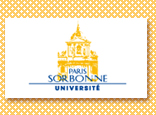|
Now, we move to the second item - index. I would like to present firstly the definition of index in ICT to you, then its different usages. The last point I will mention is the application of index in computer sciences.
Definition (computer science)
Index shows interaction, marks past use. (Jeff White)
Here again, a definition of index given by prof. White. From his point of view & based on Peirce's logic, indexical function leads user to link & shows the previous action & actual action.
At the top of Yahoo! news, you can find the list of topic.
Please note if you click on WORLD, it changes colour (from blue to black), WORLD in black colour shows you the actual action. The topic in pink colour shows you the webpage you visited previously .
Different usages of index
An alphabetical list of names, subjects etc at the back of a book, with numbers of the pages where they can be found.
Usage: index of a book, index in a telephone directory...
In general, while we talk about index, immediately we think about an alphabetical index at the back of a book. This is its common usage which is different from what I mentioned before, index - the meaning of peirce. Then we also know index in a telephone directory. The alphabetical index is used massively in some presentations so as to facilate people to locate the information which they want to read, such as, an exhibition, a list of exhibitors in the first page of the catalogue to help visitors to locate the booth number of a company.
A set of cards, each with a name or piece of information on it, arranged in alphabetical order, as used in a library.
Usage: card index
Also, we know card index used in library. Likewise, this usage is also used in a catalogue of an exhibition in which visitors can find all the specific information concerning an exhibitor, such as its contact details, its products, etc.
A statistical indicator providing a representation of value of the securities which constitute it. Indices often serve as barometers for a given market or industry & benchmarks against which financial or economic performance is measured.
e.g. price index, growth index...
Thirdly, while reading newspapers or listening to radio, we often hear price index, growth index, the economic & financial terms. It is a barometer to tell financial or economic performance.
These examples are not exhaustic. As my subject focuses to the peirce's terms, I will not list all the examples here. Now let's move to the last item of index, application in the computer sciences.
Application in computer sciences
- Representation of index in WEB: status bar.
- Indexical quality: it changes colors, and it calls a new node onto the screen.
- Index represents the notion of author, a defined notion
Professor White thinks that in information & communication technology, links possess 3 basic indexical functions. Firstly, a link can be programmed to react to the browser's pointer passing over it. Such as the status bar change or bolder. Secondly, the link can indicate the clicking of the mouse in two ways: it changes colors, and it calls a new node onto the screen. Thirdly, the link is given a finite definition by author so as to hinder user's past experience on this indexical function.
On the Yahoo! webpage, when you point the mouse to this character, it shows you the status bar & tells you that you can use links.
It is not typographic function, but indexical function.
Each item is defined by author so that you have a clear idea where you will be leaded to & you can make your choice. Without this definition, you don't know what it is exactly & where it directs you to. As your past experience tells you it will be this or that. In White's paper, it calls this ethical links.
webpage of NEWS: "IRELAND" is a common word. It can cover a number of subjects. Without a finite definition of author, user don't have any idea where he is guided to.
|



